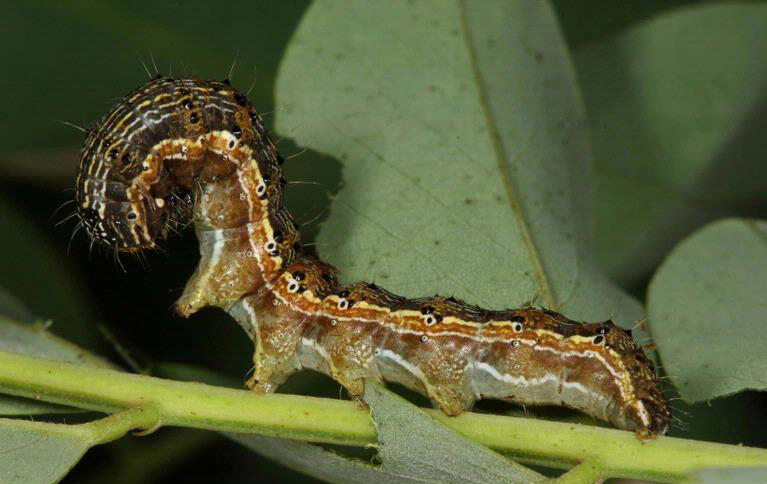Here is a Helicoverpa armigera caterpillar:
It looks like your standard caterpillar. Little, squirmy, kind of creepy, kind of cute. It turns, eventually, into this distinctly less cute fat moth:
But that’s not why Brazil is freaking out about it, declaring emergency in two states. Brazil is freaking out because this thing can eat. Momma Helicoverpas can lay hundreds upon hundreds of eggs on a single plant, and those caterpillars will eat pretty much whatever plants they encounter: tomato, cotton, okra, beans, chickpeas, sorghum, tobacco, potatoes, any number of fruit and ornamental plants. And, oh yeah, soy and corn and cotton — Brazil’s big commercial crops.
While the infestation has yet to affect Brazil’s soy or other grain prices, it’s already increasing production costs where the caterpillar is present, since farmers have to apply several layers of insecticide and, potentially, destroy large swaths of infested plants. If the problem persists, however, the effects could spill over to Brazil’s soy and corn supplies, and subsequently to global grain prices. Brazil is the world’s largest exporter of corn, and is vying to replace the US as the world’s largest exporter of soy — it’s currently a close second. China, which consumes over 60% of the world’s soy and is slated to increase its corn imports, can’t be happy to see that a longtime agricultural foe has gained a foothold in the breadbasket of South America.
What can we say, China? Buy local.





